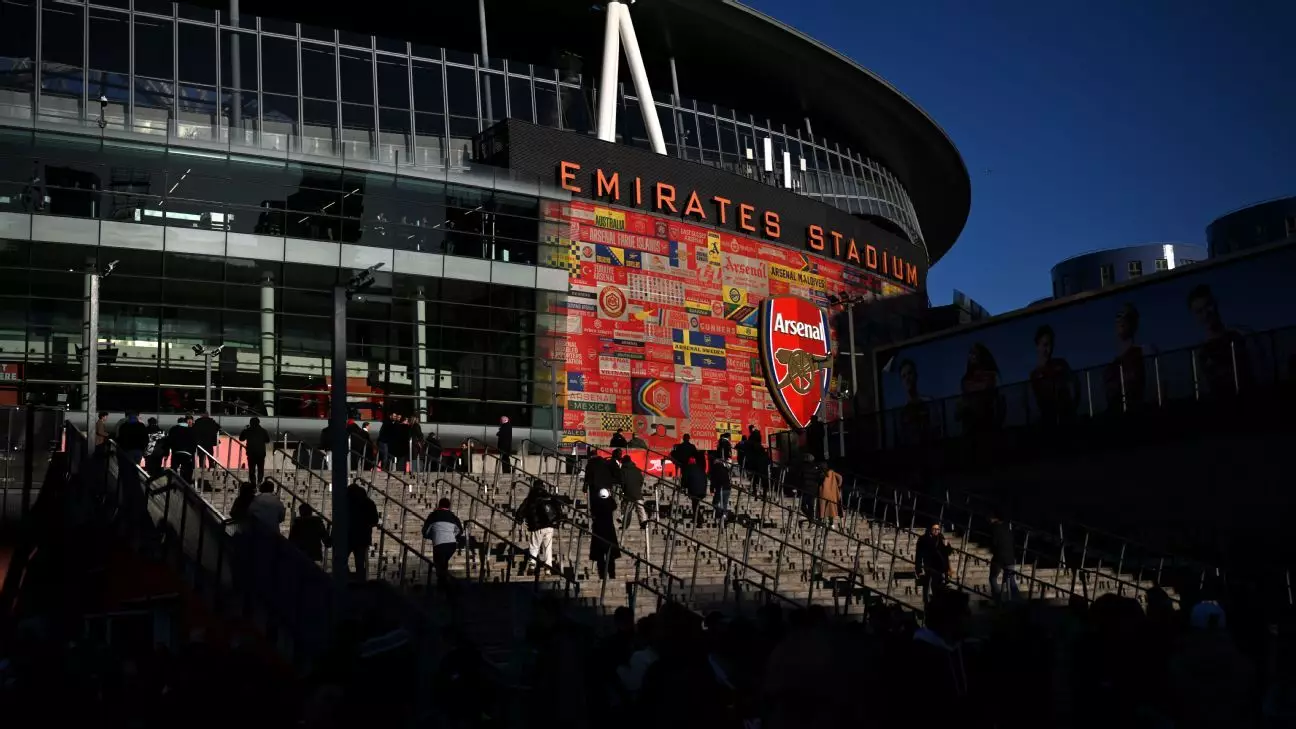Arsenal Football Club recently disclosed a significant financial loss of £17.7 million ($22.3 million) for the fiscal year ending May 31, 2024. Despite this setback, the club marked an impressive revenue milestone, reporting record earnings of £616.6 million, a considerable increase from the £466.7 million reported in the previous year. Much of this revenue can be attributed to their successful return to the UEFA Champions League after a six-year absence and the club’s on-field accomplishments, which included reaching the quarterfinals, only to be edged out by Bayern Munich. This resurgence not only bolstered matchday revenues but also helped enhance overall visibility and brand strength on a global scale.
A significant portion of Arsenal’s revenue derived from player trading, amounting to £52.4 million. This revenue stream has increasingly become vital for clubs navigating a landscape marked by stringent financial regulations, particularly UEFA’s Financial Fair Play (FFP) regulations and the Premier League’s Profit and Sustainability Rules (PSR). While the club successfully executed high-profile signings, such as Declan Rice from West Ham for up to £105 million and Kai Havertz from Chelsea for £67.5 million, the increased expenditure has had repercussions. The club’s wage bill ballooned from £234.8 million to a staggering £327.8 million, indicating the pressure of maintaining competitive salaries in a highly dynamic market.
In recent transfer windows, Arsenal faced criticism for their strategic decisions, particularly regarding the addition of a new striker. The accounting period under review does not encompass the summer and January transfer windows, where the team recorded a relatively modest net spend of around £13 million. Despite bringing in promising talents like Riccardo Calafiori and Mikel Merino, as well as making some important loan and permanent deals, their lack of a notable striking figure has left fans and analysts questioning the club’s foresight and strategic planning in a competitive league.
The club’s challenges are compounded by market conditions that have made it more difficult to raise funds. The reduction in liquidity across football clubs has made trades trickier and has emphasized the importance of adhering to regulatory frameworks. Arsenal’s statement indicated that market pressures have adversely affected their ability to realize profits. The sales of players like Folarin Balogun and Granit Xhaka, while financially beneficial, highlight the necessity of balancing squad depth with fiscal discipline.
Despite the financial losses, Arsenal’s return to the Champions League signals a positive trajectory in terms of competitiveness and prestige. The ability to draw substantial matchday revenues and record-breaking amounts from player trading reflects well on the club’s market presence. However, the critical examination of their transfer strategy reveals areas needing improvement, particularly in proactive team building. Looking forward, the club must navigate financial implications intelligently while fostering a squad that can compete at the highest levels. Meeting the challenges of FFP and the PSR while ensuring on-pitch success will define Arsenal’s strategic roadmap in the years to come.

